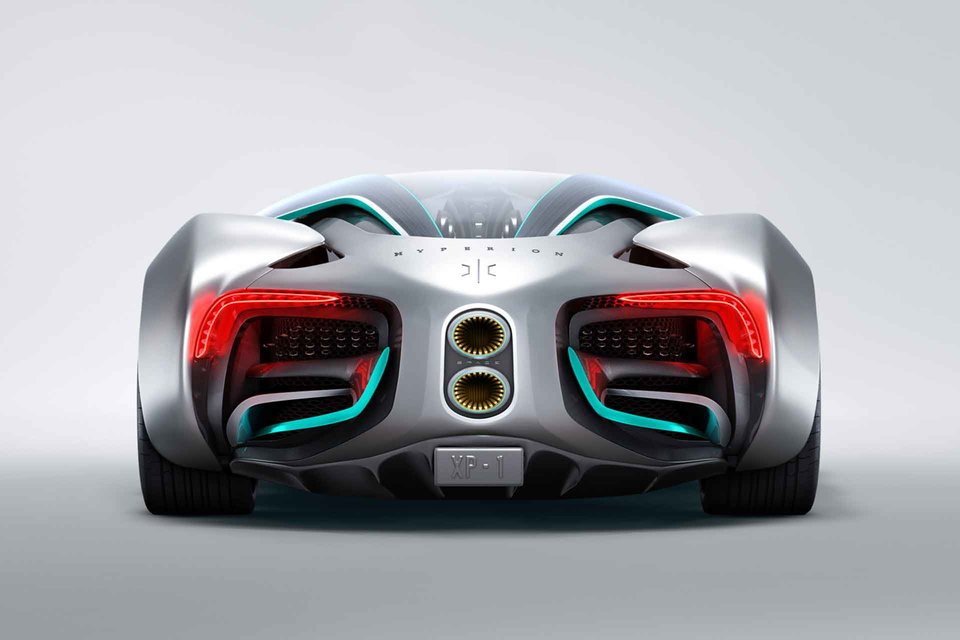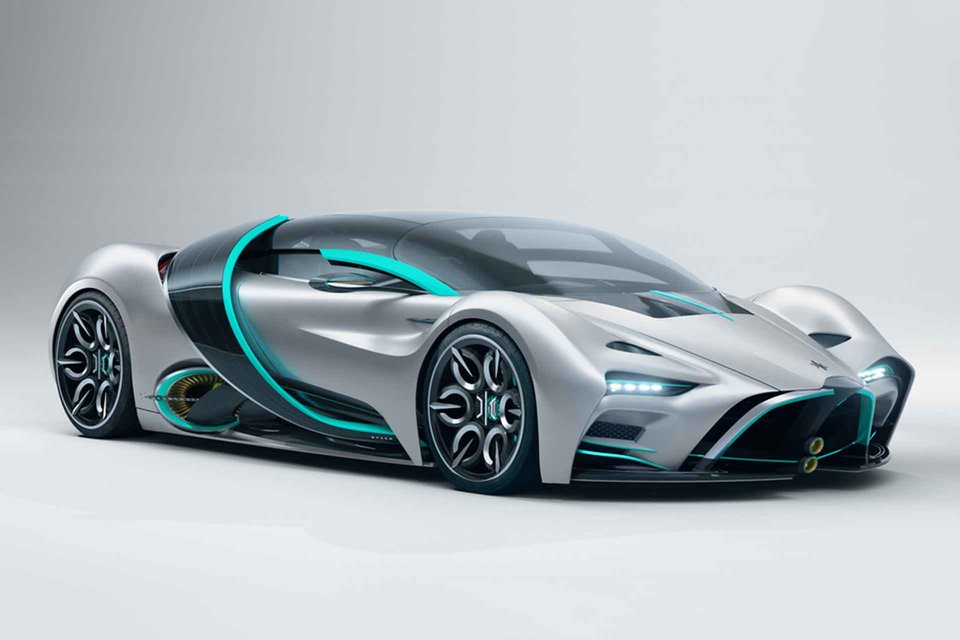Hyperion has unveiled their new XP-1 prototype, which looks a bit like a Bugatti that landed from outer space.
Described as the first chapter in the company’s long-term vision to promote hydrogen energy, XP-1 is hailed as “the culmination of nearly a decade of hydrogen technology development, testing and research by more than 200 researchers and scientists.”

From the outside, THE XP-1 has a bold and radical design that will make it even more impressive.
The company didn’t go into too many details, but the car has a titanium alloy reinforced composite body and a “eddy current forced” air inlet.The car also has “V-wing” doors and a wraparound glass canopy, which can apparently be electronically colored to protect privacy.Other highlights include a Kevlar composite diffuser, LED lighting and active aerodynamic wings to help improve high-speed cornering.The sides are covered with solar panels, and Hyperion says they can “clearly follow the sun’s path.”

More importantly, the XP-1 USES 20 – and 21-inch wheels wrapped in Pirelli P Zero tires, which are supported by huge carbon ceramic discs that have an 18-inch (457 mm) front and a 17-inch (432 mm) back.Hyperion says it has a 98-inch (2,489 mm) curved display and gesture control technology, although we only know the inside.Other highlights include carbon fiber and titanium upholstery, as well as carbon fiber seats wrapped in hand-sewn leather.

Hyperion scoffs at the specifications, but says it has proton exchange membrane fuel cells, carbon-fiber hydrogen storage systems and supercapacitor storage technology.The model also features multiple electric motors, all-wheel drive and a three-speed transmission.
The company says the XP-1 will be able to accelerate from 0-60 MPH (0-96 km/h) to a top speed of 221 MPH and above in less than 2.2 seconds.The car also has an initial range of 1,016 miles and can be charged in less than five minutes.The car is expected to be extremely lightweight, thanks to its carbon-titanium shell and lightweight body, with scales weighing less than 2,275 pounds.The car will also be equipped with an “ultralight” aluminum alloy independent dual-wishbone suspension and a hydraulic driving altitude system.

The XP-1 was launched to help demonstrate the benefits of hydrogen technology, with Hyperion pointing out that it has electric motors without adding weight or extending the charging time of lithium-ion batteries.Hyperion chief Executive Angelo Kafantaris added that the car was “designed in part to educate the public about science and technology” because “aerospace engineers have long recognized the advantage of hydrogen being the most abundant and lightest element in the universe.”

Xp-1 is scheduled for mass production in 2022 and will be produced in the United States.Initially, only 300 models will be produced, and the models will be customizable in a variety of ways.Hyperion is not yet ready to talk about price, but the company says it will be “in the same league as other supercars with this level of performance and will announce it after the new car is released.”The company spokesman added: “The models you see will be consistent with actual production in 2022.”
Hyperion XP-1 is known to travel 1,000 miles in a tank of hydrogen.One reason is that car bodies do not need heavy batteries, and use hydrogen fuel cells to store energy, eliminating the need for batteries.




